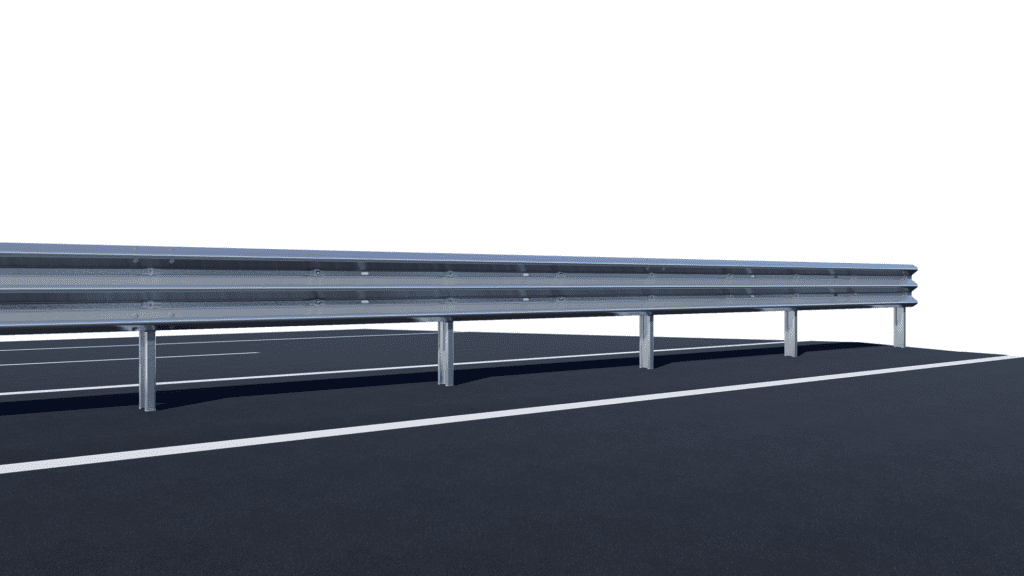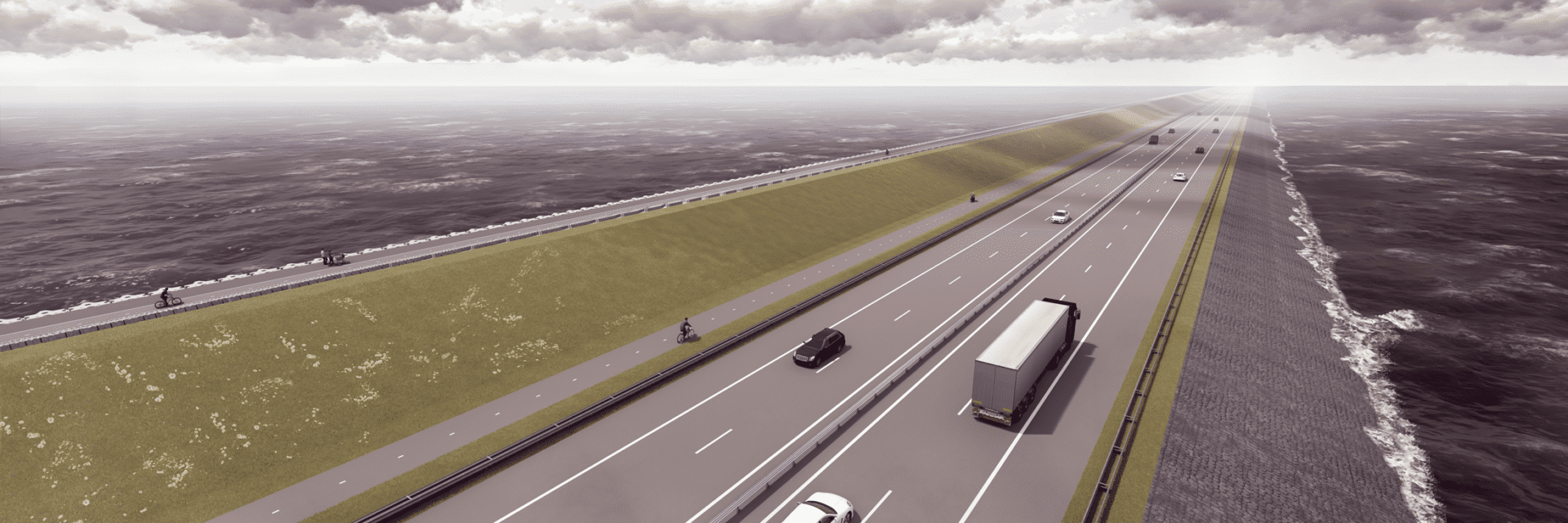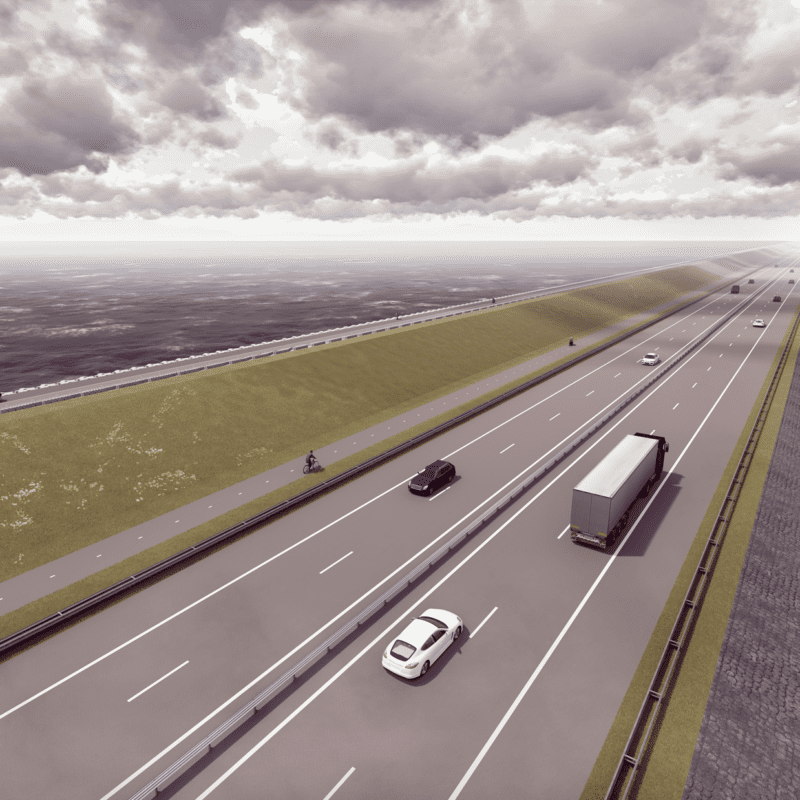Why
The road must be renovated for the purposes of traffic safety. The road has a small emergency lane with a width of 2.8 metres on both sides, but the current standard is 3.5 metres. Because the road is locked in between the IJsselmeer (also known as Lake IJssel) and the dike, the emergency lanes cannot be widened easily. We create space for broader emergency lanes by reducing the width of the central reserve, which is possible by placing an innovative guardrail. Because we will be paving the central reserve, it will no longer be able to capture any precipitation (rain, snow, and hail). This water will be drained to the IJsselmeer using a new rainwater discharge system below the road surface.

How
We will use the space of the central reserve to increase the width of the emergency lanes. A new rainwater discharge system had to be designed because of the paving of the central reserve and the new road profile: Instead of a twin convex profile, whereby both lanes taper at a slight transversal slope as a result of which the rainwater flows to the sides, as well as to the central reserve, the A7 lanes will have a single convex profile. The central reserve will be at the same height as the highest point of the road. The rainwater will not flow to the central reserve, but only to the left and right sides of the road. The rainwater will subsequently flow to the IJsselmeer below the road surface using a completely new rainwater discharge system.
Innovative guardrail
Because the width of the central reserve will be reduced and the traffic will be closer to the other lane, a new type of guardrail has been developed specifically for the Afsluitdijk. The design has been tested using various simulations and live crash tests with various vehicles.
CO2 reduction
We will use Low Energy Asphalt Concrete for the new road profile. This type of asphalt is produced at a temperature which is over 30 per cent lower than traditionally produced asphalt. This leads to energy savings and a reduction in CO2 emissions.
When
The work on the road surface has started in 2020 and has been completed in 2022.

